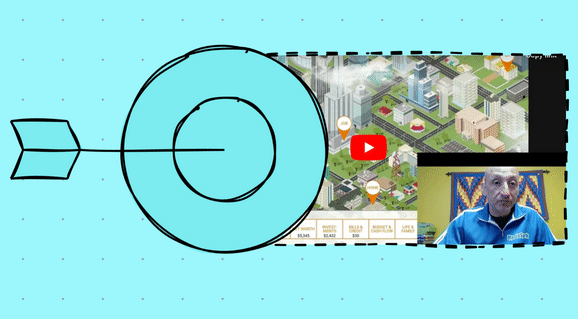
Using Goals for Student Assessment in a Life & Money Simulation
Assessment of student progress and achievement is an important requirement in education.
But how do we assess students in a simulation game when the path and outcomes are personalizedfor each student?
This is a challenge that we had to overcome when we designed a highly-realistic life and money simulation to help students gain personal financial literacy skills.
We believe the best way to teach personal finance (and change behavior) is to allow someone to live their life virtually in a simulation. Allow them to make realistic life and money decisions and experience the consequences for decades into the future.
But once we have such a realistic simulation experience, how do we determine success?
What should the outcomes be in such an experience?
- Should students be required to amass a lot of money?
- Should students be forced to go to college?
- Should students be required to own a home?
The answers to these questions vary for each student. And we should not attempt to tell anyone what their life goals should be.
Instead, the role of education should be to help equip students with the knowledgeand skillsthey need to identify and achieve their own personal goals.
So, how do we accomplish this while also making it possible for instructors to assess student success?
I'll show you how we solved this challenge in the video below —
As a bonus, the assessment methodology demonstrated in the video above has these key benefits:
- Personalized
- Measures behavior
- Data driven
- Real-time monitoring
- Fully automated
I'll share more assessment methodologies in future issues of this newsletter.
Receive this newsletter by email —
I'm Mathew Georghiou and I write about how games are transforming education and learning. I also share my experience as an entrepreneur inventing products and designing educational resources used by millions around the world. More about me at Georghiou.com